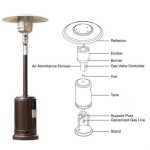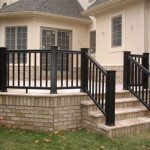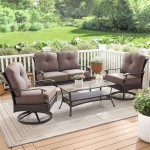Choosing the Right Outdoor Patio Ceiling Material
Creating a comfortable and aesthetically pleasing outdoor patio involves careful consideration of various design elements, with the ceiling playing a pivotal role in both functionality and visual appeal. The selected material significantly impacts the patio's protection from the elements, its overall ambiance, and long-term maintenance requirements. This article explores several popular outdoor patio ceiling materials, outlining their advantages, disadvantages, and suitability for different applications.
The selection of a patio ceiling material is not merely an aesthetic decision; it is a practical one that should take into account the intended use of the patio, the local climate, and the overall architectural style of the property. Different materials offer varying degrees of weather resistance, durability, and insulation. Considerations should include factors such as susceptibility to moisture damage, resistance to fading from sunlight, and the ability to withstand strong winds and extreme temperatures.
Wood: A Classic and Versatile Option
Wood is a time-honored material that brings warmth and natural beauty to outdoor spaces. It can be used to create a variety of ceiling styles, from simple plank ceilings to more elaborate tongue-and-groove designs. The choice of wood species is crucial for outdoor applications, with naturally rot-resistant options like cedar, redwood, and pressure-treated lumber being the most suitable.
Cedar is highly prized for its natural resistance to decay, insects, and moisture. Its aromatic oils act as a natural preservative, making it an excellent choice for outdoor use. Redwood offers similar properties, with a distinct reddish-brown hue that adds visual appeal. Pressure-treated lumber is a more affordable option, but it requires regular maintenance to prevent warping, cracking, and fading.
While wood offers aesthetic benefits, it also presents certain disadvantages. It is susceptible to moisture damage if not properly sealed and maintained. Regular painting or staining is necessary to protect the wood from the elements and prevent rot. Wood can also be more expensive than some other patio ceiling materials.
The installation of a wood patio ceiling typically involves framing the structure with lumber and then attaching the chosen wood material to the framing. This can be a relatively straightforward process for experienced DIYers, but professional installation is often recommended to ensure proper construction and longevity.
Aluminum: Durability and Low Maintenance
Aluminum is a lightweight, durable, and low-maintenance material that is well-suited for outdoor patio ceilings. It is resistant to rust, corrosion, and insects, making it an excellent choice for coastal regions or areas with high humidity. Aluminum ceilings are available in a variety of styles and colors, including options that mimic the look of wood.
One of the key advantages of aluminum is its resistance to the elements. It will not rot, warp, or crack, even in harsh weather conditions. This makes it a long-lasting and cost-effective option for patio ceilings. Aluminum also requires minimal maintenance; occasional cleaning with soap and water is typically sufficient to keep it looking its best.
Aluminum patio ceilings can be installed in several ways, including interlocking panels, tongue-and-groove systems, and suspended grid systems. The installation process is generally simpler than that of wood, and the lightweight nature of the material makes it easier to handle. However, proper flashing and sealing are essential to prevent water intrusion.
While aluminum offers numerous benefits, it can be more expensive than some other patio ceiling materials, such as vinyl. It may also lack the natural warmth and aesthetic appeal of wood. However, aluminum's durability and low maintenance often outweigh these drawbacks, making it a popular choice for homeowners.
Vinyl: A Budget-Friendly and Versatile Choice
Vinyl is a synthetic material that is gaining popularity as a patio ceiling option due to its affordability, versatility, and ease of maintenance. It is resistant to moisture, insects, and rot, making it a durable choice for outdoor applications. Vinyl ceilings are available in a wide range of colors and styles, including options that resemble wood grain.
One of the primary advantages of vinyl is its cost-effectiveness. It is typically less expensive than wood or aluminum, making it an attractive option for budget-conscious homeowners. Vinyl is also easy to clean and maintain; it can be simply hosed down or wiped clean with a damp cloth.
Vinyl patio ceilings are typically installed using interlocking panels or tongue-and-groove systems. The installation process is relatively straightforward, and the lightweight nature of the material makes it easy to handle. However, it is important to ensure that the vinyl is properly supported and secured to prevent sagging or warping.
While vinyl offers several advantages, it also has some limitations. It is not as strong or durable as wood or aluminum, and it may be more susceptible to damage from extreme temperatures or impact. Vinyl can also fade or discolor over time with prolonged exposure to sunlight. However, high-quality vinyl products are treated with UV inhibitors to minimize fading.
Fabric Awnings and Shade Sails: Flexible and Temporary Solutions
Fabric awnings and shade sails offer a flexible and often temporary solution for creating shade and protection on a patio. These options can be particularly appealing for those seeking a less permanent or expensive patio ceiling alternative. They are available in a variety of colors, sizes, and materials, providing options for different aesthetic preferences and functional needs.
Fabric awnings are typically attached to the house or a freestanding structure and can be retractable or stationary. Retractable awnings offer the flexibility to adjust the amount of shade and sunlight on the patio, while stationary awnings provide constant coverage. Shade sails are tensioned fabric structures that are suspended between multiple anchor points, creating a visually appealing and functional shade canopy.
The choice of fabric material is crucial for outdoor applications. Acrylic fabrics are known for their durability, water resistance, and resistance to fading. Polyester fabrics are more affordable but may not be as durable or water-resistant as acrylic. The fabric should also be treated with UV inhibitors to protect it from sun damage.
While fabric awnings and shade sails offer several advantages, they also have some limitations. They are not as durable or weather-resistant as permanent patio ceiling materials like wood, aluminum, or vinyl. They may require more frequent cleaning and maintenance, and they may need to be taken down during strong winds or storms. However, their flexibility and affordability make them a popular choice for many homeowners.
Pergolas with Lattice or Solid Roofing: Combining Structure and Shade
Pergolas are open-roofed structures that can be enhanced with lattice or solid roofing materials to provide varying degrees of shade and protection. This combination offers a balance between the open-air feel of a pergola and the more complete coverage of a traditional patio ceiling. The choice of roofing material depends on the desired level of shade and the overall aesthetic of the patio.
Lattice roofing provides partial shade while still allowing some sunlight and airflow to penetrate. It can be constructed from wood, vinyl, or metal, and it can be custom-designed to create different patterns and shading effects. Solid roofing provides more complete protection from the sun and rain. It can be made from a variety of materials, including wood, metal, and polycarbonate.
The design and construction of a pergola with lattice or solid roofing require careful planning and attention to detail. The structure must be strong enough to support the weight of the roofing material and withstand wind and weather. Proper drainage is also essential to prevent water from pooling on the roof.
Pergolas with lattice or solid roofing offer a versatile and attractive option for creating a comfortable and functional outdoor space. They can be customized to suit different architectural styles and personal preferences. However, they may be more expensive than some other patio ceiling options, and they require professional installation to ensure proper construction and longevity.
Metal Roofing: A Durable and Modern Aesthetic
Metal roofing for patios offers a durable, fire-resistant, and often energy-efficient option that can provide a modern aesthetic to outdoor spaces. Advances in metal roofing technology have made it a more viable and attractive option for residential patios, with a variety of styles and colors available.
Common metal roofing materials include steel (galvanized or coated), aluminum, and copper. Steel is often the most affordable, but it requires proper corrosion protection. Aluminum is lightweight and rust-resistant, making it a good choice for coastal areas. Copper provides a unique aesthetic that weathers beautifully over time, but it is also the most expensive option.
Metal roofing is known for its longevity and resistance to extreme weather conditions. It can withstand high winds, heavy snow loads, and intense sunlight without significant degradation. Additionally, some metal roofing systems offer reflective coatings that can reduce heat gain and lower energy costs.
While metal roofing offers excellent durability and energy efficiency, it can be more expensive than some other patio ceiling materials. It can also be noisier than other options during rainstorms, although this can be mitigated with proper insulation. The installation of metal roofing typically requires specialized tools and expertise, so professional installation is often recommended.
Polycarbonate Panels: Lightweight and Translucent Option
Polycarbonate panels are a lightweight, durable, and translucent option for patio ceilings, offering a balance of sunlight transmission and weather protection. These panels are made from a strong plastic material that is resistant to impact, UV radiation, and temperature extremes.
One of the key advantages of polycarbonate panels is their ability to transmit light while blocking harmful UV rays. This creates a bright and airy patio space without the risk of sunburn or fading of outdoor furniture. Polycarbonate panels are also available in a variety of tints and textures, allowing for customization of the light level and privacy.
Polycarbonate panels are relatively easy to install and can be cut to size using common woodworking tools. They are typically attached to a frame made of wood, metal, or vinyl. Proper sealing and flashing are essential to prevent water intrusion.
While polycarbonate panels offer several benefits, they can be more expensive than some other patio ceiling materials, such as vinyl or fabric. They may also be more susceptible to scratching than other materials. However, their durability, light transmission, and UV protection make them a popular choice for many homeowners.

7 Best Porch Ceiling Ideas Life On Summerhill

The Right Porch Ceiling Adds Charm

15 Impressive Tongue And Groove Outdoor Ceiling Ideas You Ll Love

7 Best Porch Ceiling Ideas Life On Summerhill

Porch Ceiling Ideas Make Your Inviting By Adding Design Above

Maintenance Free Outdoor Ceiling Materials From Versatexoffer More Color Appeal And Performance Than Ever Res Porch Remodel
A Better Alternative To Wood Beadboard For Exterior Porch Ceilings Allura Usa

15 Impressive Tongue And Groove Outdoor Ceiling Ideas You Ll Love

7 Best Porch Ceiling Ideas Life On Summerhill

15 Impressive Tongue And Groove Outdoor Ceiling Ideas You Ll Love
Related Posts








